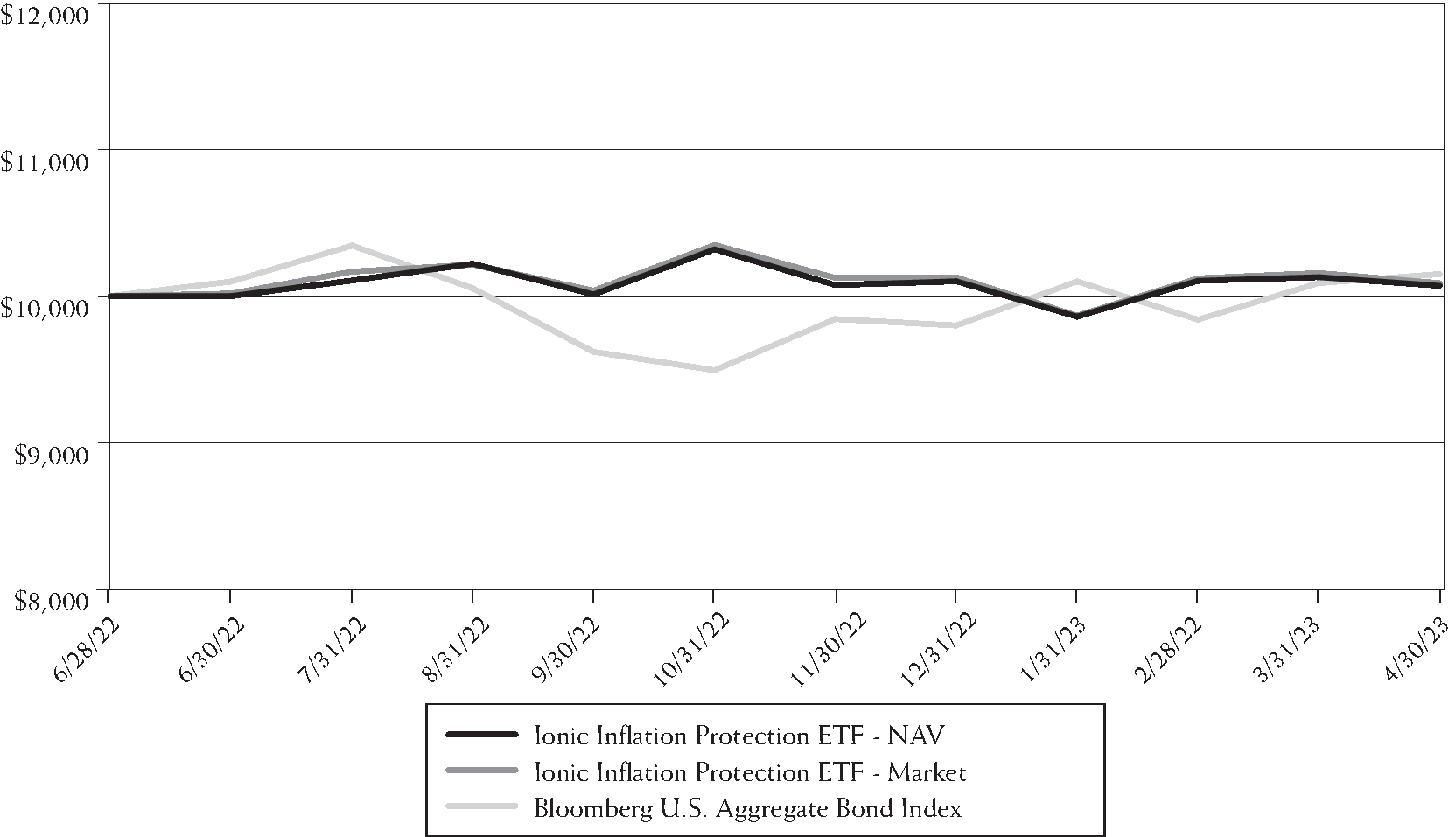based on trading volume and market liquidity, and is generally lower if shares have more trading volume and market liquidity and higher if Shares have little trading volume and market liquidity. Further, a relatively small investor base in the Fund, asset swings in the Fund and/or increased market volatility may cause increased bid-ask spreads. Due to the costs of buying or selling Shares, including bid-ask spreads, frequent trading of Shares may significantly reduce investment results and an investment in Shares may not be advisable for investors who anticipate regularly making small investments.
•Shares May Trade at Prices Other Than NAV. As with all ETFs, Shares may be bought and sold in the secondary market at market prices. Although it is expected that the market price of the Shares will approximate the Fund’s NAV, there may be times when the market price of Shares is more than the NAV intra-day (premium) or less than the NAV intra-day (discount) due to supply and demand of the shares or during periods of market volatility. This risk is heightened in times of market volatility or periods of steep market declines. The market price of Shares during the trading day, like the price of any exchange-traded security, includes a “bid-ask” spread charged by the exchange specialist, market makers, or other participants that trade the Shares. In times of severe market disruption, the bid-ask spread can increase significantly. At those times, shares are most likely to be traded at a discount to NAV, and the discount is likely to be greatest when the price of Shares is falling fastest, which may be the time that you most want to sell your Shares.
•Trading. Although Shares are listed for trading on the NYSE Arca, Inc. (the “Exchange”) and may be listed or traded on U.S. and non-U.S. stock exchanges other than the Exchange, there can be no assurance that an active trading market for such Shares will develop or be maintained. Trading in Shares may be halted due to market conditions or for reasons that, in the view of the Exchange, make trading in Shares inadvisable. In addition, trading in Shares on the Exchange is subject to trading halts caused by extraordinary market volatility pursuant to Exchange “circuit breaker” rules, which temporarily halt trading on the Exchange when a decline in the S&P 500 Index during a single day reaches certain thresholds (e.g., 7%, 13%, and 20%). Additional rules applicable to the Exchange may halt trading in Shares when extraordinary volatility causes sudden, significant swings in the market price of Shares. There can be no assurance that shares will trade with any volume, or at all, on any stock exchange. In stressed market conditions, the liquidity of Shares may begin to mirror the liquidity of the Fund’s underlying portfolio holdings, which can be significantly less liquid than Shares.
K.General Market Risk. Economies and financial markets throughout the world are becoming increasingly interconnected, which increases the likelihood that events or conditions in one country or region will adversely impact markets or issuers in other countries or regions. Securities in the Fund’s portfolio may underperform in comparison to securities in the general financial markets, a particular financial market or other asset classes, due to a number of factors, including inflation (or expectations for inflation), interest rates, global demand for particular products or resources, natural disasters or events, pandemic diseases, terrorism, regulatory events, and government controls.
L.Interest Rate Risk. Generally, the value of fixed income securities (not including TIPS) will change inversely with changes in interest rates. As interest rates rise, the market value of fixed income securities tends to decrease. Conversely, as interest rates fall, the market value of fixed income securities tends to increase. This risk will be greater for long-term securities than for shortterm securities. Changes in government intervention may have adverse effects on investments, volatility, and illiquidity in debt markets. In addition, the interest rates payable on floating rate securities are not fixed and may fluctuate based upon changes in market rates. As interest rates rise, the value of a fixed-income security held directly or indirectly by the Fund, such as TIPS, is likely to decrease. An increase in interest rates may lead to heightened volatility in the fixed-income markets and adversely affect the liquidity of certain fixed-income investments. In addition, decreases in fixed-income dealer market making capacity may also potentially lead to heightened volatility and reduced liquidity in the fixed-income markets.
M.Other Investment Companies Risk. The Fund will incur higher and duplicative expenses when it invests in ETFs and other investment companies, including money market funds. By investing in another investment company, the Fund becomes a shareholder of that investment company and bears its proportionate share of the fees and expenses of the other investment company. There is also the risk that the Fund may suffer losses due to the investment practices of the underlying funds as the Fund will be subject to substantially the same risks as those associated with the direct ownership of securities held by such investment companies. ETFs may be less liquid than other investments, and thus their share values more volatile than the values of the investments they hold. Investments in ETFs are also subject to the “ETF Risks” described herein.
N.Cybersecurity Risk. With the increased use of technologies such as the Internet to conduct business, the Fund is susceptible to operational, information security, and related risks. In general, cyber incidents can result from deliberate attacks or unintentional events. Cyber attacks include, but are not limited to, gaining unauthorized access to digital systems (e.g., through “hacking” or


